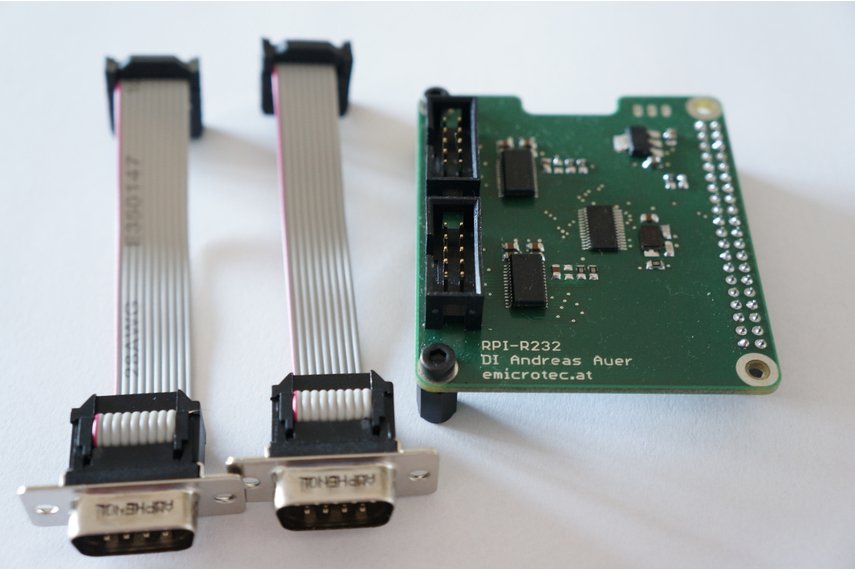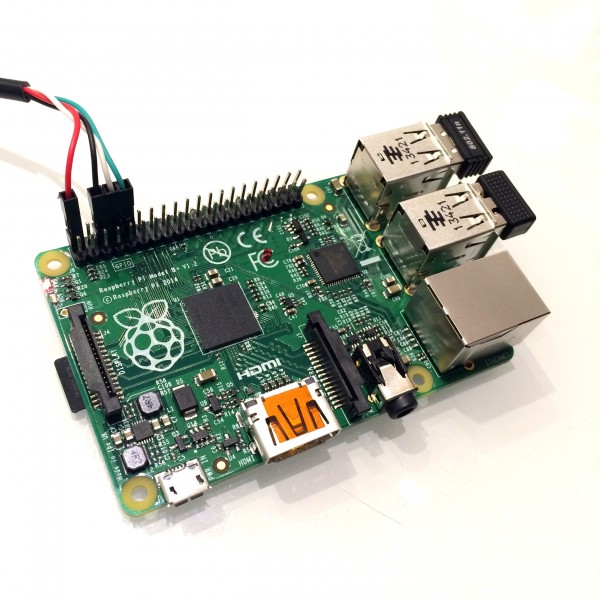Serial Port On Raspberry Pi
Nov 13, 2014 On the Pi, your serial port (from the USB/Serial) is /dev/ttyUSB0. The output you just quoted has, I guess, come from a different machine, which is equipped with what appear to be two genuine UART chips (16550A chips, to be exact), and they.
- Using Serial Port On Raspberry Pi 3
- How To Program A Usb Serial Port On Raspberry Pi
- Raspberry Pi Serial Output
- Serial Port On Raspberry Pi 3

- I have tried /dev/serial0, and enableuart=1 in /boot/config.txt, with a wiringPi code that used to work with raspberry pi 2, yet it still fails to initiate serial communication (return condition is -1). I also tried /dev/S0 to no avail. What might I be missing? (also freed serial port from raspi-config).
- The serial port is a common way to “talk” to devices and is a feature that most microcontrollers and computers have. This Raspberry Pi Serial tutorial teaches you how to utilize the board’s UART feature in order to connect to a PC or to other microcontrollers and peripherals.
Using Serial Port On Raspberry Pi 3
In this tutorial we will see how to use the serial port on Raspberry Pi. We will use the serial port available on Raspberry with a RS232/TTL 3-5,5V adapter and a USB-serial adapter. By default the Raspberry Pi’s serial port is configured to be used for console input/output. This can help to fix problems during boot, or to log in to the Pi if the video and network are not available.
To be able to use the serial port to connect and talk to other devices (e.g. a modem a printer. ), the serial port console login needs to be disabled.
Here we use Raspberry Pi 2, and we connect a RS232/TTL 3-5,5V adapter to pins 4 (5V), 6 (GND) ,8 (TX),10 (RX) of Raspberry, obviously connect tx with rx and vice versa.
To search for available serial ports we use the command
The output is something like this

Last line indicates that the console is enabled on the serial port ttyAMA0, so we disable it
Run the configuration command and follow the instructions below
Reboot and try with
output now is
Now we can use the serial ttyAMA0. We connect an adapter usb / serial, then we will try to establish a communication between the two serial ports; obviously in a practical application to every serial we could connect a device, for example a modem, a printer a RFID reader etc.
After connecting the second serial port we launch the command to find the name that Raspberry gives him
The output is something like this
Ok, now we create two files, one who writes something on the ttyAMA0 port and the other that reads on the ttyUSB0 port.
How To Program A Usb Serial Port On Raspberry Pi
serial_write.py
serial_read.py
If we run both files, serial_read.py will read what serial_write.py writes
This is just a small example but it can serve as a starting point to send a print to an old printer or read data from a router or a gps.
Follow us on social to stay informed.
http://www.emmeshop.eu
In this tutorial, you’ll learn about Raspberry Pi serial communication (UART), and how to connect your Raspberry Pi board to the Arduino boards or PC using serial communication.
- Serial communication between Raspberry Pi and PC
- Serial communication between Raspberry Pi and Arduino
Serial communication (UART) is one of the most popular communication protocols. Most processors support this two-wire connection. Also, many of modules and sensors use serial communication to connect to the other devices.
Serial communication requires only two wires; one for transmitting data and the other one for receiving it.
The rate of the data transfer in this protocol is called the Baud rate. The unit of baud rate is bit per second.
Raspberry Pi boards have two types of UART communications. One is called PL011 and the other is called miniUART. The Raspberry Pi boards that have Bluetooth/Wireless module, use the PL011 for UART communication by default.
Warning
The voltage level of all Raspberry Pi pins, including the RX and TX pins, is 3.3 volts. So to connect a device with 5 volts voltage level to the Raspberry Pi, you should use a voltage level converter or resistance-split circuit.
You can check the Raspberry Pi website for more information about the Raspberry Pi serial communication
| Raspberry Pi 3 B or B+ | × | 1 |
| Arduino UNO R3 | × | 1 |
| TTL to USB converter | × | 1 |
| Male to Female jumper wire | × | 1 |
| Bread board | × | 1 |
| 1K Ohm Resistor | × | 3 |
To establish a serial communication between the Raspberry Pi board and your PC you need a serial to USB converter.
Follow the steps below to start the Raspberry Pi UART communication:
Step 1: Connect the serial to USB converter to the Raspberry Pi board as is shown in the circuit. Then plug the Raspberry Pi supply and connect the converter to your PC.
Step 2: Go to the Device Manager and find the port number that is connected to the converter.
Step 3: Open your terminal software and set up the configuration.
Max a u( a) subject to a ∈ S,where u is the decision-maker's payoff function over her actions and S is the set of her feasible actions.If the decision-maker is a classical consumer, for example, then a is a consumption bundle, u is the consumer's utility function, and S is the set of bundles of goods the consumer can afford. That is, we write the decision-maker's problem in the form. What is economic theory. We usually make assumptions that guarantee that adecision-maker's preference ordering is represented by a payoff function (sometimes called utility function), so that we can present the decision-maker's problem as one of choosing an action, among those feasible, that maximizes the value of this function.
Step 4: Enable UART in the Raspberry Pi.
Open the Raspberry Pi terminal and insert the following commands.
1. Open the config.txt file in the nano editor using the following command.
Add the following lines to the end of the file.
2 | enable_uart=1 |
Then press Ctrl+x and press Y to save the file and close it.
2. Reboot your Raspberry Pi.
3. Check the terminal software on your computer
Choose your favorite soccer team and win the Champions League by scoring as many goals as you can. Play Football Heads: 2018-19 Champions League - Free online game on Dvadi.com Hot Games. Uefa champions league game unblocked free. In the Football Heads: 2015-16 Champions League unblocked game, you will play against the opponent team and try your best to achieve the victory. Let’s control your players and kick the ball into the opposite goal to score the higher point! Win the match and become the Champion!
4. Disconnect the serial communication between the Raspberry Pi and the Bluetooth module.
5. Open cmdline.txt in nano editor.
Delete the “console=serial0,115200” line and save the file.
6. sudo nano /boot/cmdline.txtReboot your Raspberry Pi again.
7. Install the minicom terminal on your Raspberry Pi.
The following command opens the minicom terminal, set the baud rate to 115,200, and starts the serial communication.
Raspberry Pi Serial Output
After executing this command, you should see the following window.
Now you can test the serial communication between the Raspberry Pi and your pc.
Note
If you want to see the commands you write in the minicom terminal, you need to enable the Echo mode by pressing Ctrl+A and then entering E in the minicom terminal.
To exit minicom, first press Ctrl+A and then enter X.
Serial Communication Between Raspberry Pi and Arduino
You can connect your Arduino boards to the Raspberry Pi using a USB cable. By doing this, you provide the Arduino supply voltage, and you can also transfer your information between Arduino and the Raspberry Pi through the serial interface
Serial Port On Raspberry Pi 3
Using the following command you can open the minicom terminal at 9600 bit/sec baud rate.
Now upload your code on the Raspberry Pi board and you can transfer the information between the Raspberry Pi and Arduino.
The following code sends any text you write in the minicom terminal from the Raspberry Pi to the Arduino. Then the Arduino returns the same text to the Raspberry Pi.
2 4 6 8 10 12 | // put your setup code here, to run once: } voidloop(){ if(Serial.available()){ Serial.print('Arduino: '); } |
- Connect a few LEDs to the Arduino and control them using the commands you write in the Raspberry Pi terminal.